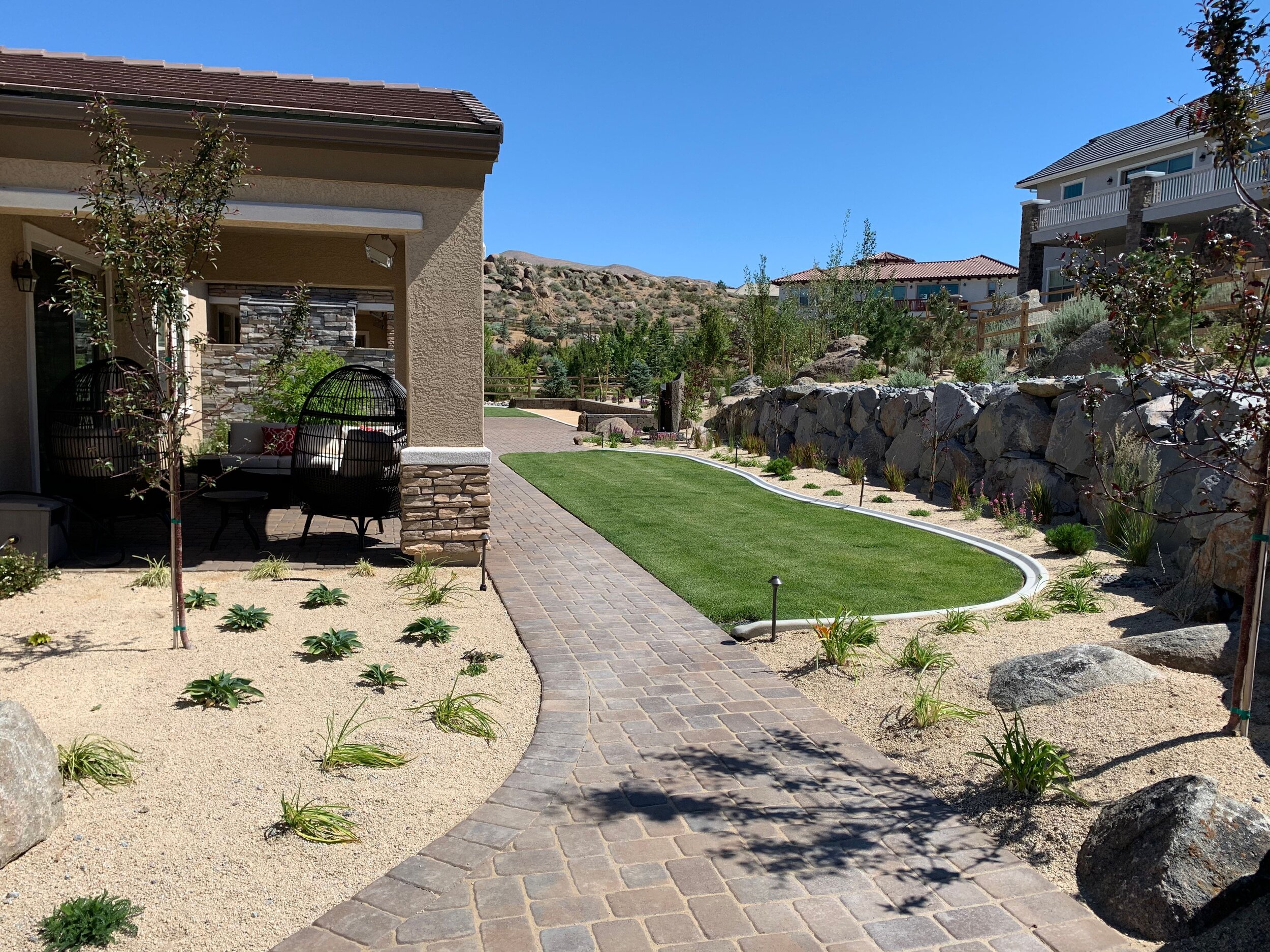Elevate Your Home's Visual With Lasting Landscape Design Designs and Eco-Friendly Practices

Benefits of Lasting Landscaping
Implementing lasting landscape design techniques not only conserves all-natural resources but likewise advertises biodiversity and boosts overall environmental health. One significant benefit is the decrease of water consumption via the usage of drought-resistant plants, rainfall yards, and reliable irrigation systems.
Moreover, lasting landscape design can improve soil wellness by decreasing the use of chemical plant foods and chemicals, consequently developing a much healthier setting for plant development and advantageous soil microorganisms. This, in turn, boosts the total resilience of the landscape to hold up against environmental stress factors and environment modification influences - bush removal Jacksonville. Furthermore, lasting landscaping techniques can draw in varied wild animals, including pollinators like and butterflies, cultivating an extra balanced and vivid ecosystem within the home
Incorporating Native Plants
To develop upon the benefits of sustainable landscape design, a calculated concentrate on including indigenous plants can even more improve eco-friendly durability and advertise biodiversity within the landscape. Native plants are types that naturally occur in a particular area and have actually advanced to grow in the neighborhood environment, soil problems, and community. By including indigenous plants in landscape design styles, homeowner can decrease water use, lessen the requirement for chemical pesticides and fertilizers, and sustain the regional wildlife population.
Integrating native plants additionally aids in protecting the distinct personality and identity of a region's flora. These plants frequently require much less maintenance once developed, making them a affordable and sustainable landscape design option over time. Additionally, indigenous plants can draw in indigenous pollinators like bees and butterflies, adding to the general health of the ecosystem.
When picking native plants for landscape design projects, it is important to select species that are fit to the certain environmental conditions of the website. Consulting with regional nurseries or arboretums can give beneficial guidance on picking the ideal indigenous plants for a particular location. By integrating native plants right into landscape design designs, homeowner can create gorgeous, sustainable outside areas that profit both the environment and the neighborhood.

Water Preservation Techniques
Efficient watering methods play a vital function in sustainable landscaping methods, ensuring optimal water conservation initiatives in outdoor spaces. Drip irrigation provides water directly to the roots of plants, lessening dissipation and runoff.
In enhancement to advanced irrigation methods, xeriscaping is another water-saving landscaping technique that concentrates on utilizing drought-resistant useful reference plants, compost, and effective irrigation to produce a low-water landscape style - landscaping contractor Jacksonville. By choosing native plants that are appropriate to the regional environment and dirt problems, homeowner can decrease the demand for extreme watering, eventually saving water and advertising a lasting outdoor environment
Eco-Friendly Hardscaping Ideas
Enhancing outdoor areas with environment-friendly hardscaping features can contribute dramatically to lasting landscaping techniques. Opt for materials like redeemed wood, recycled concrete, or natural stone to decrease environmental influence when thinking about hardscaping aspects. These products not just include an one-of-a-kind aesthetic appeal to your outdoor room but likewise reduce the demand for brand-new resources removal.
Applying permeable leading alternatives such as crushed rock or absorptive concrete can help in reducing water drainage and promote groundwater recharge. These alternatives enable rainwater to permeate right into the ground, protecting against disintegration and reducing the concern on stormwater systems.
Integrating native plants right into hardscaping designs can further enhance eco-friendliness by supporting neighborhood wildlife and lowering the demand for extreme watering or chemical treatments. By including green walls or vertical gardens, you can present much more greenery into metropolitan setups, improving air high quality and biodiversity.
Including energy-efficient lighting, such as solar-powered LEDs, into hardscaping designs can minimize electrical energy intake and lower your residential or commercial property's carbon footprint. Focusing on green hardscaping concepts not only improves the appeal of your exterior space yet likewise shows a commitment to environmental stewardship.
Maintenance Tips for Sustainable Landscapes

Consistently trim plants to advertise healthy and balanced development and prevent overgrowth that can cause pest infestations or moved here diseases. Usage natural plant foods to nourish the dirt and plants without damaging chemicals that can leach into the setting. For hardscaping aspects, such as absorptive pavers or rock paths, regularly clean them to avoid particles buildup and preserve their capability. By staying positive with upkeep tasks, you can preserve the beauty and sustainability of your landscape for many years to find.
Verdict
To conclude, lasting landscape design practices offer various benefits for building owners, from boosting the aesthetic charm of the surroundings to promoting environmental conservation. By integrating indigenous plants, applying water conservation techniques, and using environment-friendly hardscaping concepts, homeowner can create lovely landscapes that are also ecologically accountable. With proper upkeep, sustainable landscapes can add and prosper to a much healthier ecosystem for both human beings and wild animals.
Moreover, sustainable landscape design can boost dirt health by lessening the usage of chemical plant foods and pesticides, thereby creating a much healthier environment for plant development and useful dirt microorganisms.To build upon the benefits of sustainable landscaping, a tactical emphasis on integrating indigenous plants can further boost ecological strength and promote biodiversity within the landscape. By consisting of indigenous plants in landscaping styles, property owners can minimize water use, lessen the requirement for chemical pesticides and plant foods, and support the regional wild animals populace.
These plants frequently call for less maintenance when established, making them a economical and lasting landscaping service in the long run. By incorporating native plants into landscape design designs, residential property proprietors can develop stunning, sustainable outside spaces that profit both the area and the atmosphere.